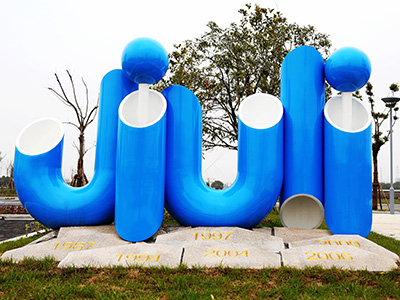Titanium and niobium, as the stabilizing elements that strongly form carbon and nitrogen compounds in stainless steel, are mainly used to prevent the decrease of chromium concentration caused by the combination of chromium and carbon to form chromium carbide in steel, which leads to the decline of corrosion resistance, especially the intergranular corrosion. Ti can also combine with sulfur in steel to form TiC2S compound to prevent pitting corrosion caused by MnS, but Ti-containing austenitic stainless steel is prone to knife corrosion after welding. Knife corrosion is a kind of corrosion caused by chromium deficiency in the welding fusion line of 18-8 type stainless steel containing titanium.
In stainless steel, because the affinity between titanium and nitrogen is greater than niobium, and niobium and carbon affinity is greater than titanium, in the current development of stainless steel containing nitrogen and some also contain niobium. In this way, it can not only prevent the adverse effects caused by a large amount of NBN, but also play the role of Nb in fixing carbon and strengthening Nb in steel.
Niobium and carbon can improve the strength of stainless steel at room and high temperatures. They form intermetallic compounds with nickel and disperse in steel, which is the main strengthening means of precipitation hardening stainless steel.
In ferritic stainless steels, the addition of titanium and niobium separately and in combination (i.e., double stabilization) can improve the fatigue resistance, cold formability and weldability of ferritic stainless steels, but has a negative effect on the brittle transition temperature of the steel.
Nitrogen compounds formed by titanium and niobium, TiN as an inclusion will affect the surface and internal quality of steel, NBN will also reduce the thermoplasticity of steel. (From Introduction to Stainless Steel)


















